Highly Intelligent Dog Breeds, According to Experts
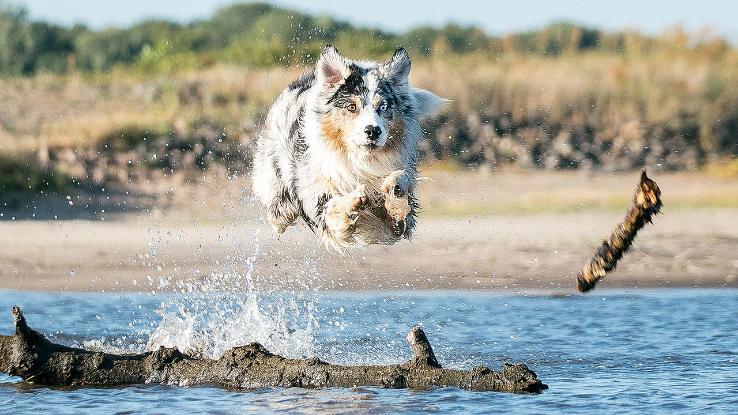
Any dog lover can tell you that canines are among the smartest animals on Earth. That’s certainly true, but no matter how smart you think your dog is, some breeds are just smarter than others — sorry, sweet beagles!
You can’t give a dog an IQ test, of course, but their intelligence can be measured in other ways, such as obedience and trainability. These are the 30 smartest dog breeds, according to experts, listed in increasing order of intelligence.
Bernese Mountain Dog
Bred to work on farms, Bernese Mountain Dogs are intelligent, easy to train, good-natured and calm. Some people describe them as lovable teddy bears. They are definitely huge — the average male can weigh up to 115 pounds and measure a whopping 27 inches tall (back height).

Although this dog is relatively easy to train, it has a sensitive nature and doesn’t react well to scolding. Positive reinforcement is the way to go with this gentle giant. Treat him with care and kindness — make sure he gets plenty of vigorous daily exercise — and he will soon be eating out of your hand.
Old English Sheepdog
The Old English Sheepdog was historically bred to be a drover — that is, a dog that helped farmers drive the sheep to market. Today, most sheepdogs are bred to be show dogs or pets, so they’ve lost a lot of that herding instinct. Still, they are highly trainable, if a bit stubborn, and do well with a confident owner.

Most sheepdogs are sociable and enthusiastic and known for their clownish ways. They can be demanding when it comes to your attention and may become destructive if left alone too often, but they are fantastic companions for active families. Just keep in mind: Sheepies can be messy and are known to drool. They are not the right dog for a fussy household!
Bearded Collie
Bearded Collies are intelligent and capable of learning a lot of tricks, but they are also stubborn and highly independent. To be their best, these furry beasts need an owner who is confident and not afraid to enforce the rules. That being said, Bearded Collies are also playful and known for their “Beardie Bounce” — a happy, bounding leap.

If not trained properly, they have a very serious tendency to be jumpers, and they will get right up in your face until taught the behavior is inappropriate. They also have a lot of energy and require near-constant activity in the form of walks, hikes, agility training and more. If you live an active lifestyle, Beardies can make the best of friends.
Jack Russell Terrier
The lively Jack Russell is one of the brightest and most trainable of all terriers — when handled properly. Although the breed can excel at tricks, agility and “earthdog” training, they require a lot of attention. When not stimulated mentally and physically, they have the tendency to become destructive and difficult to control.

This feisty fellow is definitely better for active families, as he wants to be involved in everything. Despite his small size, he will happily go on long hikes or participate in vigorous play sessions. He is not happy sitting alone all day while you work outside the house, so that’s something to keep in mind!
Weimaraner
Large, powerful and full of energy, the Weimaraner was bred to hunt all day. Like most sporting breeds, they are capable of learning a lot, but they’re also prone to distraction, and any exciting sound or scent can quickly take their attention away from you — and the task at hand.
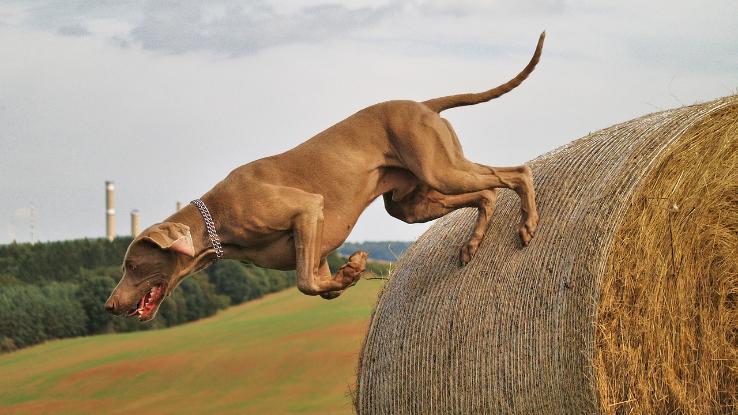
When left to his own devices, the Weimaraner has a tendency to be willful and dominant. It’s important to be clear about who is boss and set firm boundaries. It’s also important to note that this breed requires an excessive amount of physical exercise. Too much confinement can lead to destructive outbursts and other unwanted behaviors.
English Springer Spaniel
The English Springer Spaniel was bred as a gun dog — one that would “flush” game out in the field. Today, they are more often bred as pets but are still a smart, highly trainable breed. As sporting dogs, they often excel at tracking and retrieving exercises, but they also enjoy obedience training courses and fly-ball games.
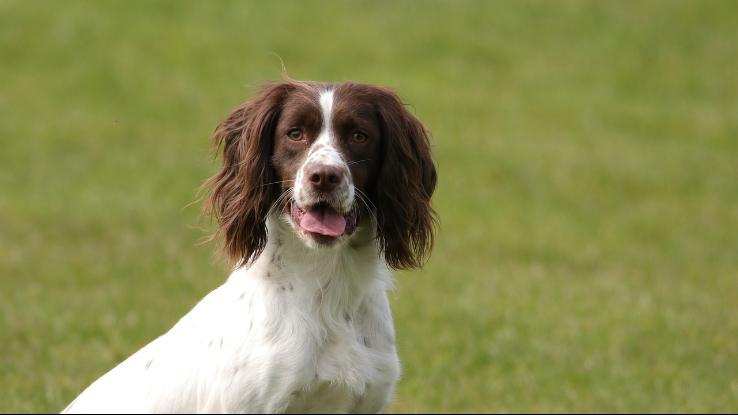
Although these dogs tend to chew and bite, they typically just need an outlet to disperse their energy. One long daily run should do the trick. It should be noted that some spaniels have a tendency for dominance and aggression, so early socialization is critical.
Pembroke Welsh Corgi
Often referred to as the “big dog on short legs,” the Pembroke Welsh Corgi is highly trainable and food driven. Still, there are certain challenges that are more difficult for them, such as learning not to bark. (They absolutely love to bark.) Obedience training, agility training and just chasing a ball around the yard are often enjoyable outlets for excess energy.
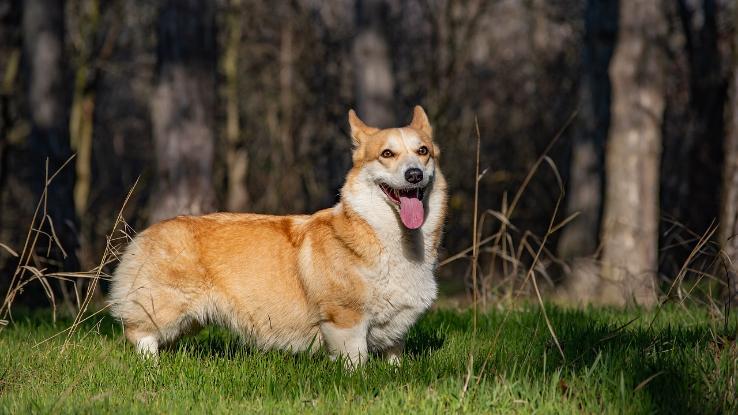
Although Corgis are spirited and athletic, they don’t require as much exercise as some of the other breeds on this list, but they do need mental stimulation. The companionship of a family along with some “puzzle” toys should do the trick.
Irish Setter
The good-natured Irish Setter is a saint around children and particularly good around other animals. They are also naturals when it comes to water retrieving and hunting, but they can be slow to mature.

That being said, they are popular dogs for a reason. Not only are they super easy going, but they are funny, playful and drop-dead gorgeous. Although the Irish Setter can be easily distracted by sights and smells, he’s also very eager to please. With some patience and persistent training, this dog makes a wonderful pet.
Rottweiler
Rottweilers often catch a bad rep as temperamental or inherently vicious animals, but that’s just not true. In reality, the Rottweiler is a headstrong, stubborn dog, but he’s also calm and loyal. What he lacks in happy-go-lucky attitude, he more than makes up for in trainability. You can teach a Rotty almost anything, and he learns quickly.

It should go without saying that the large, muscular Rottweiler needs daily exercise and space to run, but it’s also vital that his mind gets a workout. Obedience classes, agility courses and tracking exercises are a must. It should be noted that early socialization is key to avoiding territorial tendencies.
German Shorthaired Pointer
Large, muscular and athletic, the German Shorthaired Pointer is another breed that started out as a hunting dog. As a general rule, they can be stubborn animals but are still relatively easy to train. Because of their nature, they excel at hunting and tracking but also make excellent family pets.

Pointers have a high energy level and do well with families or individuals who are athletic and active. They require quite a bit of daily exercise, and a single walk isn’t really going to cut it. Without a vigorous hike or run every day, these guys can become destructive and difficult to control.
Alaskan Husky
The Alaskan Husky is a type of dog, rather than a breed. Unhindered by breed standards, they can vary widely in appearance and abilities. As a general rule of thumb, they are highly intelligent and can learn a lot — given the right trainer. Alaskan huskies require a lot of patience and persistence if you want to teach them anything.
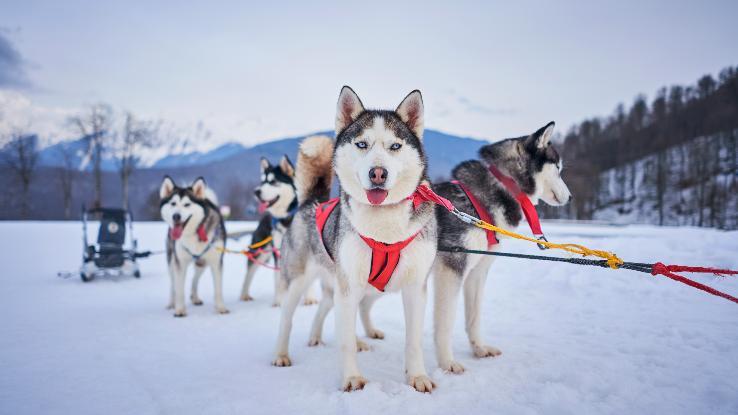
They excel at pulling sleds over the snow and ice, but anything that’s less exciting for them can take a long time to learn. Alaskan Huskies are notoriously slow to housebreak and terrible at recall training, but they don’t need help with socialization. They want to say “hi” to everyone!
Alaskan Malamute
One of the oldest known breeds, Alaskan Malamutes are working dogs, designed to haul, pull, hunt and backpack. They make fine family companions if you have the energy to keep up with them, but they will also gladly eat your smaller pets — no guinea pigs or bunnies! They are highly intelligent but incredibly difficult to train.

Like the other sled-pullers on this list, Alaskan Malamutes have a mind of their own. Unless you are extremely reliable with training, they will establish themselves as pack leader and completely disregard everything you say. Start teaching them early and remain consistent if you want any chance at being the boss.
Scotch Collie
If you’ve ever seen the classic TV show Lassie, you are familiar with the Scotch Collie. Bred as herding dogs, Collies are generally easy to train — as long as you offer plenty of praise and encouragement. Often, they need nothing more than verbal correction to stay on the straight and narrow.
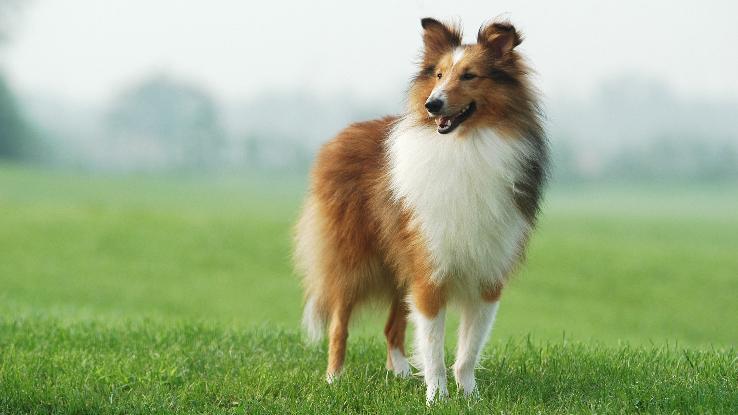
One thing to keep in mind is that most Collies require a great deal of personal attention and become unhappy without almost constant companionship. Loneliness can lead to excessive barking, destructive chewing and other unwanted behaviors. If you don’t work outside the home and can give your doggie all the attention he desires, Collies make sweet, sensitive friends.
Chesapeake Bay Retriever
The Chesapeake Bay Retriever has the strongest personality out of all the retriever breeds. He likes to be the boss — plain and simple. Respect training and early socialization are a must, or this guy will fearlessly dominate humans and animals alike. That’s not to say that he’s not smart (he is!) — he’s just a little slow to mature.

Like all sporting breeds, the Chessie requires a lot of exercise. Not only that, but he requires a nice swimming hole, which makes this breed best suited to a family that lives near a lake or ocean. As long as you give him a job to do — fetch a ball, navigate an agility course, track a duck — he will stay happy and out of trouble.
Siberian Husky
True to his name, the Siberian Husky has roots that trace back to the sled dogs used by ancient Siberian tribes. Today, he remains an excellent sledding or pulling dog, and he trains easily when he’s doing something he loves. On the other hand, huskies are naturally selfish and do not train easily on tasks they don’t enjoy.

Although huskies are naturally intelligent, they are notoriously independent. In addition, they are masters of escape, so you better have a tall fence. If this fella gets away, he will just keep going. Obedience training needs to start early and continue well into adulthood. If you have the patience for some challenges, you’ll be well rewarded with friendship and love from this breed.
Australian Shepherd
One of the smartest of all dog breeds, the Australian Shepherd can learn almost anything when given the opportunity. They are eager to learn and love mental challenges. Just make it very clear that you are the one in charge. These guys tend to be domineering and stubborn if they can get away with it.

Although shepherds can vary in temperament, the Australian Shepherd tends to be a highly energetic, yet faithful, companion. They are playful and fun but also have herding instincts — which means they will chase just about anything. With enough daily exercise and consistent mental stimulation, they make good family pets.
Saint Bernard
The Peter Pan films use a Saint Bernard to portray “Nana,” the dog that cares for the children. Given their gentle, protective nature, the choice makes sense. Adult Saint Bernards are calm, relaxed and docile. Some even describe them as “clingy.” They do well with families and have amazing patience with children.

Although they aren’t fast learners, Saint Bernards will more than make up for it in eagerness to please. They are huge and not suited to agility courses, but they are quite receptive to basic commands such as “sit” and “stay.” He also needs plenty of exercise, or you’ll have one hefty dog on your hands!
Akita Inu
Some historians claim the Akita Inu was bred and raised by ancient Japanese samurais, which could account for their high level of trainability and steady temperament. Although they can be strong-willed, Akitas are generally calm and quiet and very easy to housebreak. His personality, however, may leave something to be desired.
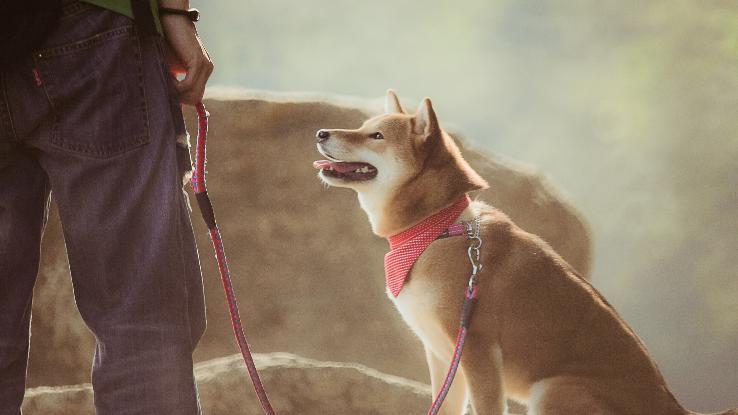
Akitas are large and physically powerful. Pair that with their tendency to be reserved and protective, and there could be some risk when they are around cats, other animals and even small children — especially when food is involved. It could also be harder to find a reasonable homeowners’ insurance policy if you have one of these dogs.
English Setter
There are two types of English Setter: the field/hunting type and the bench/show type. They both tend to be mild-mannered, sociable and highly intelligent, but their mellow personality can make them seem unmotivated and even lazy. Fortunately, they are also food motivated, and you can use that to your advantage.

English Setters require constant companionship. If left alone without a human or another animal, they will become destructive. Even though they are a sporting breed, their calm temperament makes them ideal for apartment living as long as they get enough daily exercise.
Great Dane
Although he is absolutely massive, the Great Dane is also gentle and mild mannered. If you start training at a young age, the process will be easy. Wait too long, and you could have a giant problem on your hands. The Great Dane’s large size can make him dangerous, even when he doesn’t mean to be, so proper manners are a must.

It should go without saying that a Great Dane needs a lot of space, although he doesn’t really require much exercise. He also needs a lot of company, and you don’t want him to become lonely. Because of his size, his destructive power is on a whole other level.
Brittany Spaniel
With origins as a hunting dog, Brittany Spaniels are intelligent and relatively easy to train, but it requires a gentle hand. A harsh rebuke can completely destroy their spirit and leave them distrustful of you forever. Use a gentle touch, and this breed will eagerly follow your every command.
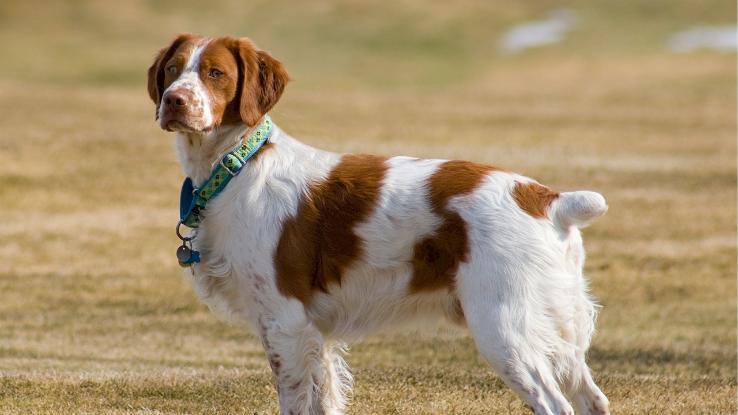
Like many intelligent breeds, Brittanys require a lot of mental stimulation and companionship. If left alone too often, they will become hyperactive and destructive. In addition, they are known whiners and tend to “dribble” urine when they feel intimidated, so early socialization is a must to promote confidence.
Australian Cattle Dog
The strong-willed Australian Cattle Dog requires an owner who can take charge. In the right hands, this breed has an exceptional capacity to learn. With an experienced dog handler, the Australian Cattle Dog excels in the areas of tricks, obedience, agility routines and (of course) herding.

Without the proper training or the right amount of exercise, this dog is prone to nipping, chasing and excessive barking. He is NOT an apartment dog and requires near-constant physical activity. He’s not crazy about strangers and can be pushy with other dogs, but he plays well with others, given early socialization. These dogs are best in homes without children or other pets.
Papillon
According to some sources, the Papillon is the most trainable of dog breeds — although housebreaking isn’t necessarily his forte. When it comes to advanced tricks and problem-solving exercises, however, you won’t find a better performer. Just remember to be firm, because these little guys will boss you around, given the chance.

In addition to being smart, the Papillon is a lively, playful breed. Inquisitive and independent in nature, they aren’t particularly eager to hang out on your lap all day. One thing they do enjoy is looking out the window and barking at anything that moves — no matter how benign. Excessive barking is one thing you will need to nip in the bud quickly.
Doberman Pinscher
The Doberman Pinscher is remarkably smart and easy to train, but he requires a firm hand, or he can become very domineering. These dogs are loyal and amazing protectors in addition to being sensitive and eager to please. They are often used in police work, search and rescue missions and as therapy dogs.

As a large, sporting breed, the Doberman requires at least a brisk daily walk — a run is preferable. Too little exercise can lead to restlessness and destructive behavior. Likewise, they need plenty of mental stimulation to stay happy. Most Doberman Pinschers are extremely territorial and protective of their families and require early socialization to avoid issues.
Shetland Sheepdog
The Shetland Sheepdog, or Sheltie, is an intelligent, responsive breed. Although they are relatively easy to train, they don’t do well with tension and loud noises. They also tend to be “Velcro dogs” that want to stick to their humans and not be left alone. That being said, Shelties are sensitive and sociable and get along with almost everyone they meet.

The Sheltie is another herding dog and needs quite a bit of exercise — both physical and mental. They are not dogs that can just be let out in the backyard with nothing to do. Without an appropriate amount of mental stimulation, they will quickly become destructive.
Golden Retriever
Golden Retrievers are giant love bugs — it’s impossible to meet one and not fall completely in love. Known for being sweet, devoted and eager-to-please, they are highly intelligent and very fast learners. This is one of the few breeds that is easy to train, even for a novice dog owner.

These dogs are lovable with everyone and make great family dogs — but not-so-great watchdogs. In fact, you probably won’t have any luck explaining why he can’t smother the burglar with kisses the way he does you. They require plenty of daily exercise but can live in an apartment or small house as long as those needs are met.
Labrador Retriever
The #1 ranked AKC dog for many years running, the Labrador Retriever is a perennial favorite. They are fun, happy, a little goofy and a lot intelligent. With their smarts and their happy-go-lucky attitude, they are easy to train for pros and novices alike. Although they are generally easy to control, they do have a tendency to chew when bored.

Without enough vigorous daily exercise — running, swimming, long hikes — the Lab becomes rambunctious, and not in a fun way. He will quickly and efficiently eat everything in your home, from kitchen chairs to wayward shoes. Still, most Labs take everything in stride and make excellent family pets, given the right care.
German Shepherd
Coming in near the top of the list, the German Shepherd is one of the most intelligent of all dog breeds. Provided they are trained and socialized early, these dogs are naturally obedient as long as you treat them with firmness and respect. Always eager to please, they don’t take kindly to heavy-handed treatment.
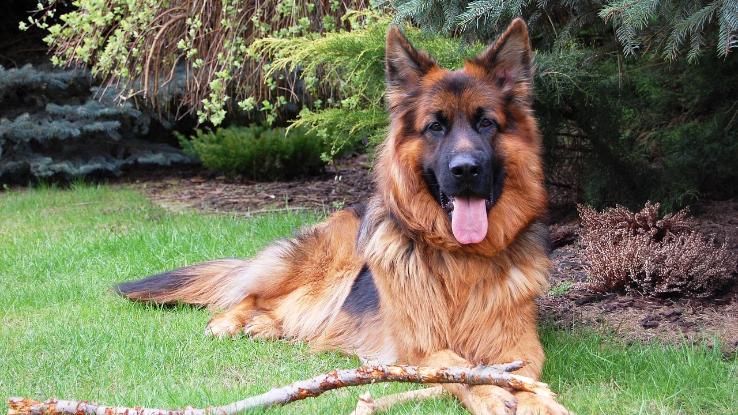
German Shepherds are typically loyal, protective of their families and good with children. The temperament of each dog can vary greatly, however, depending on his line. In some cases, the dogs are vigorous and intense, while others are hyperactive and skittish. They are complex but brilliant. No wonder this dog has been near the top of the AKC’s most popular list for so long.
Poodle
Despite their fancy-pants reputation, Poodles aren’t nearly as delicate as people make them out to be. In fact, they are rather sturdy and athletic — especially the larger standard variety. They are also highly intelligent and intuitive, making them naturals at obedience and agility competitions. Even better? They are pros at learning difficult tricks to impress family and friends.

Poodles have long been a family favorite, both for their smarts and for their special coat. What’s special about it? It’s not normal dog fur — it’s hair! This makes Poodles an ideal companion for people who suffer from allergies as well as those who just don’t like dog fur all over their furniture.
Border Collie
Coming in at #1: the Border Collie! You’re really not going to find a dog any smarter than this family favorite. In fact, these dogs are so smart that they have been known to unlock gates and let themselves out. So much for that 6-foot fence! They are highly trainable, but they can be difficult for newbies to handle.

The Border Collie’s high intelligence is offset by his fierce independent streak. He is known for being manipulative, and if he senses even a tiny bit of weakness, he will absolutely own you with his charm and personality. If you’re up for the mental challenge and have the energy to keep up with him, training and owning this dog can be a lot of fun.





